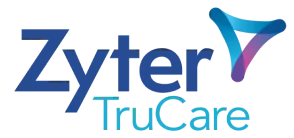- By: Kevin Riley, CEO + President, Zyter|TruCare

Hospital care represents the most significant component of U.S. healthcare costs. According to a statistical brief from the Agency for Healthcare Research and Quality (AHRQ), 3.5 million potentially preventable adult inpatient stays accounted for $33.7 billion in aggregate costs in 2017. Most of the potentially avoidable stays and associated costs were for chronic conditions. As the healthcare industry shifts its focus from reactionary to proactive/preventive, predictive analytics emerges as a crucial tool to right the ship. This technology, which employs historical data and advanced machine learning algorithms, is redefining approaches to health management, aiming to prevent illnesses before they become serious health challenges. With chronic diseases being a leading cause of death globally, predictive analytics offers a promising avenue to curb this trend by forecasting risks and enabling early intervention.
The Strategic Integration of Predictive Analytics in Healthcare
The integration of predictive analytics into healthcare, projected to reach a market size of $19.5 billion by 2026 with a compound annual growth rate of 21.2% since 2019, is a strategic response to numerous significant challenges within hospital care. This substantial growth reflects a shift towards sophisticated, data-driven strategies to enhance patient care and operational efficiencies, particularly in hospitals facing mounting pressures.
One of the primary drivers for adopting predictive analytics is the need to upgrade and integrate legacy systems in healthcare settings. Many hospitals operate with outdated technology incompatible with modern analytics solutions, requiring substantial time and financial investment to update. Over 70% of healthcare administrators identify system integration as a significant barrier to technology adoption.
Additionally, the issue of data silos poses a formidable challenge. Data scattered across various departments impedes practical analysis and consolidation, crucial for accurate predictive modeling. Hospitals that have successfully integrated data analytics solutions have seen significant improvements, including a reduction in patient wait times by up to 50% and a 20% decrease in emergency room costs due to enhanced operational efficiencies. CMS launched the Trusted Exchange Framework and Common Agreement (TEFCA) in December 2023 to bridge the gap in health information exchange across disparate health systems. Five Qualified Health Information Networks (QHINS) are signed on to use the framework and can exchange data, but an abundance of progress remains to make a major impact.
The regulatory landscape also adds complexity. Healthcare providers must navigate a myriad of privacy laws and compliance requirements, with severe penalties for non-compliance. Such conditions highlight the importance of meticulous data management and security in predictive analytics initiatives.
Moreover, the significant initial investments required for predictive analytics pose another substantial challenge. Despite the potential for considerable long-term savings, the upfront costs are hefty. Studies estimate that predictive analytics could save the U.S. healthcare system up to $150 billion annually. Thus, the implementation of predictive analytics results in substantial cost savings.
These challenges underscore why predictive analytics is increasingly viewed not merely as a technological enhancement but as a critical component of modern healthcare systems. Hospitals and healthcare providers are driven to adopt predictive analytics to navigate the complexities of today’s healthcare environment and significantly improve hospital operations’ quality of care and efficiency.
Benefits of Predictive Analytics in Addressing Healthcare Challenges
Despite these challenges, the benefits of predictive analytics in healthcare are substantial and directly address many systemic issues faced by hospitals today:
- Enhanced Patient Outcomes: Predictive models enable hospitals to intervene earlier than ever, significantly improving patient outcomes. For instance, these models have successfully reduced hospital readmissions by forecasting patients at risk of complications post-discharge. Moreover, this proactive approach minimizes the need for more invasive treatments later, enhancing the quality of life for patients. These advancements in predictive analytics help hospitals treat illnesses and prevent them, elevating healthcare delivery’s overall effectiveness.
- Efficient Use of Resources: Predictive analytics assists hospitals in anticipating patient flow and managing staffing needs more effectively, ensuring that resources are optimally allocated without overstraining the system. This strategic resource management also helps reduce wait times and improve service delivery across hospital departments. By better predicting peak times and patient loads, hospitals can adjust resource allocation dynamically, leading to more efficient operations and reduced overhead costs.
- Cost Reduction: By preventing disease escalation through early intervention, predictive analytics can significantly cut long-term healthcare costs associated with chronic disease management and emergency care. This alleviates financial pressures on healthcare facilities and makes healthcare more affordable and accessible to patients. Furthermore, predictive analytics in managing healthcare resources prevents unnecessary expenditures on emergency interventions and prolonged hospital stays, thereby driving down the overall cost of care.
- Improved Patient Experience: Tailored healthcare strategies enhance patient satisfaction by addressing conditions proactively rather than reactively, leading to better overall health management. This individualized care approach fosters a stronger patient-provider relationship, further boosting patient engagement and compliance with treatment plans. Enhanced communication facilitated by predictive insights allows providers to clearly explain potential health trajectories, empowering patients to participate actively in their health management. This leads to increased satisfaction and trust in the healthcare system.
Facilitating Proactive Healthcare with Zyter|TruCare
At Zyter|TruCare, we are committed to advancing healthcare through strategically implementing predictive analytics within our TruCare Population Health Management platform. Designed to address the multifaceted challenges of modern healthcare systems, our platform is at the forefront of transforming care delivery through:
- Seamless Integration with Existing Systems: Understanding the prevalent issue of legacy systems in healthcare, Zyter|TruCare has developed TruCare to integrate seamlessly with existing hospital IT infrastructure. This integration capability minimizes the disruption often associated with adopting new technologies and accelerates the transition to advanced analytics solutions. By facilitating smoother integration processes, we help healthcare providers modernize their operations without the substantial costs typically associated with overhauling legacy systems.
- Overcoming Data Silos: One of the standout features of the TruCare platform is its ability to consolidate disparate data sources into a unified framework. This capability is crucial for overcoming the data silos that traditionally fragment patient information across different departments. With TruCare, healthcare providers gain a comprehensive view of patient data, enhancing their ability to perform accurate predictive analyses. This comprehensive approach improves the accuracy of health predictions and enables more personalized and effective patient care plans.
- Ensuring Compliance and Security: Healthcare regulations and data security are paramount concerns for any healthcare analytics platform. TruCare is designed with built-in compliance tools that adhere to all relevant healthcare regulations, including HIPAA. Our platform ensures that all patient data is handled with the highest levels of security and privacy, giving healthcare providers the confidence to leverage predictive analytics without risking compliance violations.
- Improving Care Delivery and Operational Efficiency: By leveraging predictive analytics, the TruCare platform enhances healthcare delivery in several critical areas. It enables healthcare providers to proactively manage patient health, anticipate healthcare needs, and prevent adverse health events before they occur. Additionally, operational efficiencies are realized through optimized resource allocation and reduced healthcare costs. Predictive analytics allow for better planning and management of staffing, minimizing wait times and improving the overall patient experience.
- Empowering Healthcare Providers: Zyter|TruCare empowers healthcare providers by equipping them with tools that proactively support decision-making and patient management. Our predictive analytics capabilities include risk stratification, predictive disease modeling, and real-time alerts, which help anticipate potential health issues. This proactive approach ensures that healthcare providers can deliver higher quality care and achieve better patient health outcomes.
TruCare, Zyter|TruCare’s Population Health Management platform exemplifies how predictive analytics can revolutionize healthcare delivery. By addressing the challenges of integration, data silos, compliance, and operational inefficiency, Zyter|TruCare is helping healthcare organizations move towards a more proactive, efficient, and patient-centric model of care. Through the strategic use of technology, we are not just reacting to health problems but are anticipating and preventing them, setting a new standard in healthcare innovation.
Connect with Us
Zyter|TruCare is helping to move the needle on more predictive and preventive healthcare. Discover how our technologies can empower your organization to predict better, manage, and prevent health issues. Visit our website or contact our team for more information: Let’s Connect – Zyter|TruCare.


















